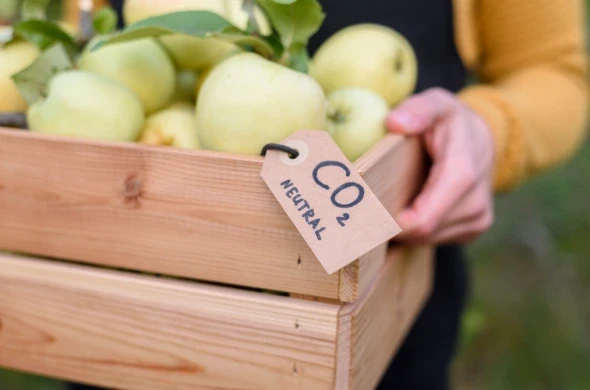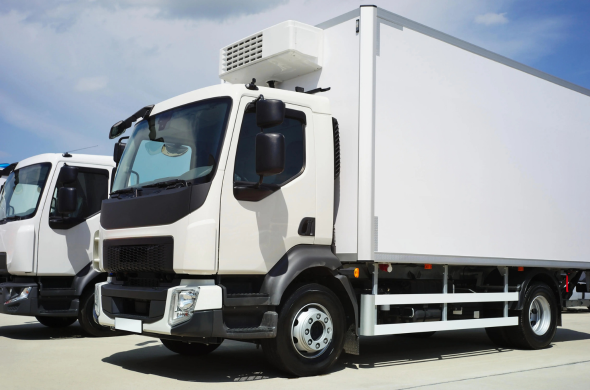Agriculture holds a critical role in the economic and social fabric of the GCC, Middle East and Africa despite the sector's modest contribution to the GDP. In these regions, agriculture is central to achieving food security and managing scarce water resources, which are essential in areas characterized by arid climates and high food insecurity.
In the Middle East and North Africa (MENA) region, agriculture provides employment for a significant portion of the population, particularly in rural areas where other job opportunities are limited. This sector's development is crucial for economic transformation, addressing high unemployment rates, and reducing poverty.
Drones are emerging as a transformative technology in agriculture, revolutionizing traditional farming practices. In the UAE, Saudi Arabia, and across the wider Middle East and Africa, drones are being leveraged to enhance efficiency, precision, and sustainability in farming operations. For instance, in the UAE, initiatives have focused on using drones for sustainable agriculture, enhancing food security, and managing horticulture value chains. Similarly, Saudi Arabia has been proactive in employing drones for desert locust control and other agricultural challenges.
Agriculture Drones
What Are Agriculture Drones? Definition
Agricultural drones are unmanned aerial vehicles (UAVs) specifically designed for use in farming. They are equipped with various sensors and imaging technologies to monitor crop health, assess soil conditions, and assist in various agricultural tasks.
History and Evolution
The use of aerial technology in agriculture dates back to the early 1900s when airplanes and satellites were first used to capture aerial images of farmland. This practice allowed farmers to monitor crop growth, identify issues like pest infestations, and manage large areas more efficiently. The first notable use of a drone-like device in agriculture occurred in the 1960s with the invention of the radio-controlled model helicopter for crop dusting.
In the 1980s, Yamaha introduced the R-50, the world's first agricultural drone designed specifically for crop spraying. This drone marked a significant milestone by integrating GPS technology and cameras, allowing for precise field analysis and mapping.
The 1990s and 2000s saw significant advancements in drone technology, making it more accessible and affordable. The introduction of autonomous navigation and advanced imaging capabilities enabled drones to perform tasks such as crop scouting, monitoring, and field analysis with greater precision. This period also saw the integration of GPS and other advanced technologies that improved the accuracy and efficiency of agricultural drones.
By the 2010s, drones had become an essential tool in precision agriculture. Modern agricultural drones are equipped with multispectral and thermal sensors, allowing for detailed monitoring of crop health and soil conditions. These drones can now perform a wide range of tasks, including precision spraying, irrigation management, and even livestock monitoring.
Types of Agriculture Drones
Fixed-Wing Drones
Overview:
Fixed-wing drones are designed similarly to traditional airplanes, featuring a single rigid wing that provides lift. They are typically used for tasks requiring long-range capabilities and extended flight times, making them ideal for large-scale agricultural mapping and surveying.
Advantages:
- Extended Flight Time: Fixed-wing drones can stay aloft for several hours due to their efficient design, with some models capable of flying for over 16 hours when fuel-powered.
- Coverage Area: They can cover large areas in a single flight, making them suitable for extensive field surveys and monitoring.
- Higher Altitude: These drones can fly at higher altitudes, which is beneficial for capturing broad aerial views and detailed maps.
Disadvantages:
- Complex Operation: Fixed-wing drones require more skill to operate, including takeoff and landing. Training is often necessary to handle these drones effectively.
- Cost: They are generally more expensive than other types of drones.
- Landing Requirements: Typically, a runway or launcher is needed for takeoff, and they cannot hover in place.
Use Cases:
- Aerial mapping
- Agricultural surveying
- Environmental monitoring
- Long-duration surveillance
Rotary-Wing Drones
Overview:
Rotary-wing drones, often referred to as rotorcraft or multirotor drones, use multiple rotors to generate lift. They include quadcopters (four rotors), hexacopters (six rotors), and octocopters (eight rotors). These drones are highly maneuverable and capable of vertical takeoff and landing (VTOL).
Advantages:
- Maneuverability: They can hover in place, move vertically, and navigate tight spaces, making them ideal for detailed inspections and precision tasks.
- Ease of Use: Generally easier to operate compared to fixed-wing drones, with simpler takeoff and landing processes.
- Versatility: Suitable for a wide range of applications, including crop monitoring, spraying, and photography.
Disadvantages:
- Limited Flight Time: Battery limitations restrict flight durations to around 20-30 minutes, although heavy-lift models can carry more weight at the expense of even shorter flight times.
- Energy Efficiency: Less energy-efficient compared to fixed-wing drones, as they require constant power to stay aloft.
Use Cases:
- Crop health monitoring
- Precision spraying
- Thermal imaging
- Close-up inspections
Hybrid Models
Advantages:
- Versatility: Can perform a wide range of tasks, including both long-range flights and precision hovering.
- Efficiency: They leverage the energy efficiency of fixed-wing flight while retaining the maneuverability of rotary-wing drones.
- Adaptability: Suitable for varied agricultural environments, including fields with difficult topography.
Disadvantages:
- Complexity: A more complex design can lead to higher costs and maintenance requirements.
- Limited Market Availability: Fewer models are available compared to pure fixed-wing or rotary-wing drones.
Use Cases:
- Large-scale field mapping with precise data collection
- Precision agriculture tasks requiring both range and detailed observation
- Versatile applications in diverse topographies
Hybrid drones are particularly valuable for farms that need both the extensive coverage of fixed-wing drones and the detailed, close-up capabilities of rotary-wing drones, making them a versatile choice for modern agricultural needs.
Key Applications of Agriculture Drones
Soil and Field Analysis
Agriculture drones equipped with multispectral and hyperspectral sensors are crucial for soil and field analysis. These drones provide precise data on soil conditions, including nutrient levels, moisture content, and pH balance. This information helps farmers optimize their fertilization strategies and manage soil health more effectively.
3D Mapping and Soil Health
Drones create detailed 3D maps of farmland, which are used for analyzing topography, drainage patterns, and soil health. These maps help in planning planting patterns, irrigation systems, and soil management practices. The data gathered allows for targeted interventions to improve soil health and optimize crop growth.
Planting Strategies and Land Management
Drones are increasingly used in planting strategies, with some systems capable of planting seeds directly. These drones can plant seeds at the optimal depth and spacing, enhancing germination rates and reducing planting costs. This technology supports precision land management by ensuring efficient use of space and resources.
Crop Monitoring and Management
Drones provide real-time monitoring of crop health through high-resolution imagery and various sensors. They can detect stressors like pests, diseases, and nutrient deficiencies early, allowing for timely interventions. Time-series animations from drone data help farmers track crop development and make informed management decisions.
Irrigation Management
Drones equipped with thermal and multispectral sensors identify areas within fields that require more or less water. This information helps optimize irrigation systems, reducing water usage and ensuring even distribution. This precision irrigation management improves crop yields and conserves water resources.
Pest and Disease Detection
Drones are essential for early detection of pests and diseases. They can scan crops using multispectral and thermal imaging to identify signs of infestation or infection. Early detection allows for targeted pesticide application, reducing the overall chemical use and mitigating crop loss.
Agricultural Spraying and Planting Precision Spraying
Drones enhance precision spraying by adjusting their altitude and spray pattern in real time based on the topography and vegetation. This ensures even coverage and reduces chemical runoff, making spraying more efficient and environmentally friendly.
Challenges and Considerations for Using Agriculture Drones
Regulatory Hurdles
The use of drones in agriculture is subject to stringent regulations that vary significantly by region. In the United States, the Federal Aviation Administration (FAA) requires commercial drone operators to obtain a Part 107 license, which involves passing a knowledge exam and adhering to specific operational restrictions, such as altitude limits and no-fly zones. Similarly, other countries have their own regulatory frameworks, which can include strict airspace management rules and mandatory registration of drones.
In Africa, the regulatory environment is less developed, leading to either very restrictive rules or a lack of comprehensive regulations. This creates challenges for farmers in obtaining the necessary licenses and operating permissions. Many regulations align with the International Civil Aviation Organization (ICAO) standards, but enforcement and awareness among local authorities can be inconsistent, complicating the adoption process.
Privacy and Ethical Concerns
Privacy issues are a significant concern when using drones in agriculture. Drones can collect extensive data, including images and videos, which can inadvertently capture private properties and individuals. This raises concerns about surveillance and data protection. Laws regulating the collection, storage, and use of such data are crucial to protect individual privacy rights. However, these laws can also limit the scope of drone operations, requiring operators to navigate complex legal landscapes to ensure compliance.
Technical Training and Skill Requirements
Operating agricultural drones and interpreting the data they collect require specialized training and skills. Despite the user-friendly design of many modern drones, there is still a steep learning curve associated with understanding flight operations, sensor functions, and data analytics. Farmers need training to effectively use drones for tasks like crop monitoring, soil analysis, and precision spraying.
Transitioning from traditional farming methods to digital agriculture can be particularly challenging for farmers with limited experience in technology. A lack of digital skills can hinder the adoption of drones, as farmers might struggle with integrating drone data into their existing farm management systems. Additionally, the initial investment in training and equipment can be a barrier, especially for smaller farms with limited resources.
To address these challenges, educational programs and support from drone manufacturers and agricultural technology companies are essential.
Buying Guide for Agriculture Drones
When choosing an agricultural drone, several factors should be considered to ensure you select the right UAV for your specific needs. Here's a detailed guide to help you make an informed decision:
Cost
Agricultural drones vary significantly in price, typically ranging from $5,000 to over $20,000. The cost is influenced by the drone’s capabilities, durability, and additional features. High-end models offer advanced features and longer flight times but come at a premium price.
Capabilities
Payload Capacity:
This determines how much weight the drone can carry, which is crucial for tasks like spraying pesticides or carrying multiple sensors.
Flight Time and Range:
Longer flight times and extended ranges allow for comprehensive data collection over large fields. Drones offer up to 90 minutes of flight time, making them ideal for extensive surveying and mapping.
Sensor Compatibility:
Depending on your needs, you might require drones with multispectral, thermal, or high-resolution cameras.
Automation and Ease of Use:
User-friendly controls and automated flight paths are essential for efficient operation, especially for those new to drone technology. Models come with intuitive software for easy data collection and analysis.
Durability
Agricultural drones must withstand various environmental conditions, including wind, rain, and rough terrain. Durable drones are designed to operate in harsh conditions, ensuring longevity and reliable performance. The DJI Agras T20, for example, is built to handle tough agricultural environments with features like obstacle avoidance and robust construction.
Embrace the Future of Farming with Ollen Group
Integrating agricultural drones into farming practices in the GCC, Middle East and Africa has proven to be a game-changer, providing precise, real-time data that enhances productivity and sustainability. Drones help in optimizing resource use, reducing costs, and improving crop yields, making them invaluable in regions facing harsh climatic conditions and water scarcity.
For those looking to implement this advanced technology, expert guidance and tailored solutions are essential. This is where Ollen Group's consulting services come into play. As a leading firm in the UAE, Saudi Arabia, and across the wider Middle East and Africa, Ollen Group offers comprehensive consulting, helping agribusinesses capture opportunities and navigate uncertainties in a rapidly evolving sector.
Ollen Group's extensive experience makes them highly relevant for discussions about agricultural drones. They provide turnkey solutions from strategy to execution, ensuring that businesses can leverage new technologies like drones effectively. Their expertise in precision agriculture, sustainability practices, and market analysis positions them as a valuable partner for agribusinesses looking to innovate and thrive.
If you're ready to revolutionize your farming practices with the latest drone technology, consider reaching out to Ollen Group.



